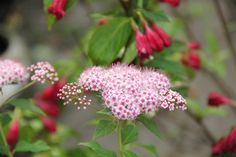Spring bulbs refer to a variety of flowering plants that produce bulbs and typically bloom in the spring season. Here’s a general plant description for spring bulb plants:
Types:
Tulips (Tulipa): Known for their wide range of colors and distinctive cup-shaped flowers.
Daffodils (Narcissus): Characterized by trumpet-shaped flowers and often featuring a central corona surrounded by petals.
Crocus (Crocus): Small, cup-shaped flowers that come in various colors, often one of the first to bloom in spring.
Hyacinths (Hyacinthus): Fragrant, bell-shaped flowers arranged in dense spikes.
Foliage:
Leaves: Spring bulb plants typically have strap-like or lance-shaped leaves that emerge from the base of the plant.
Color: The foliage is usually green, providing a backdrop to the vibrant flowers.
Flowers:
Blossoms: Spring bulbs produce a variety of flower shapes and sizes, ranging from simple and elegant to more complex and showy.
Colors: The flowers come in a wide array of colors, including shades of red, yellow, orange, pink, purple, white, and bi-colors.
Fragrance:
Scent: Some spring bulbs, such as hyacinths, are known for their sweet and fragrant blooms.
Bulbs:
Storage: These plants grow from bulbs, which store energy and nutrients for the plant to use during the growing season.
Planting: Bulbs are usually planted in the fall before the ground freezes, allowing them to establish roots and remain dormant until spring.
Growing Conditions:
Sunlight: Most spring bulbs prefer full sun to partial shade.
Soil: Well-draining soil is essential for preventing bulb rot. They can tolerate various soil types.
Moisture: Adequate moisture during the growing season is crucial for healthy bulb development.
Bloom Time:
Spring: As the name suggests, these plants bloom in the spring, often providing early-season color in gardens.
Hardiness:
Zones: Different bulb varieties are suited to different USDA hardiness zones, so it’s important to choose bulbs appropriate for your region.
Uses:
Landscaping: Bulbs are commonly used in gardens, borders, and containers to add vibrant color.
Naturalizing: Many spring bulbs can naturalize, spreading and coming back year after year.
Maintenance:
Deadheading: Removing spent flowers can encourage the plant to focus energy on bulb development.
Foliage Care: Allow the foliage to die back naturally after flowering to help nourish the bulb for the next growing season.
Spring bulb plants are cherished for their ability to bring life and color to gardens after the winter months, making them a popular choice among gardeners for their beauty and versatility.











Reviews
There are no reviews yet.